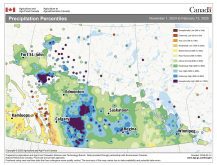Canadian oilseed growers might want to circle Nov. 6 on their calendars, says an analyst.
That is the date when the United States will have its midterm elections, in which voters will elect members of the House of Representatives and the Senate.
Actually, it is the three-week period between the U.S. midterms and the G20 meeting in Argentina that is of interest to Arlan Suderman, chief commodities economist for INTL FCStone.
He believes that could be an ideal period for the U.S. and China to resolve their trade spat. China isn’t going to budge until the elections are over, but it may want to get something done after the elections and before the two world leaders meet in Argentina.
Read Also

Biofuel sector happy with federal budget
Advanced Biofuels Canada says new Biofuel Production Incentive is a lifeline until CFR amendments are in place.
“That’s going to be a real important key where we could either move toward an agreement or lock this thing for another two years until the presidential elections,” said Suderman.
If there is a tweet from the White House during that three-week period saying a deal has been reached with China, oilseed markets could be temporarily set on fire.
The economics are there for U.S. soybeans to move to China even with a 25 percent import tariff. But that isn’t happening.
“Their feed buyers are largely afraid to make purchases of U.S. soybeans because of threats from government officials,” he said.
However, if the Chinese government suddenly drops the threats and the tariff, U.S. soybeans would be in high demand because they are $2.50 per bushel cheaper than Brazilian soybeans.
“You can imagine, (Chinese buyers) would be calling up suppliers here in the United States and buying an awful lot of soybeans before the market rises,” said Suderman.
“That alone plus the short covering could give us quite a spike in the market.”
It would also lift Canadian soybean and canola prices, but he doesn’t think it would be a long-lasting rally because the fundamentals aren’t there to support one.
The U.S. is forecast to end the crop year with 885 million bushels of soybeans, which is a burdensome supply.
Meanwhile, Brazil is off to a good start with its 2018-19 crop.
“Planting progress is going very well. Some would call it a record pace,” said Suderman.
One-third of the soybean crop is already in the ground, which means there will be an early start to Brazil’s export program. Such a development would make China happy.
Soil moisture is good, so Suderman is anticipating a big crop.
Argentina’s crop is typically seeded when rain returns in December. It is dry in about one-third of the country, but that isn’t unusual for this time of year.
The Soybean and Corn Advisor website is forecasting a 21.8 million tonne, or 13 percent, increase in South American soybean production this year because of a rebound from drought in Argentina last year.
China will be eagerly awaiting South American soybean shipments, which should start by late January.
There are reports that Chinese hog operations have cut soymeal content in rations to 12 percent from 20 percent, which could allow the country to get by without using any U.S. soybeans.
Suderman noted that the change in diet will slow the rate of gain and end up increasing corn consumption, lending further price support to that important crop.















